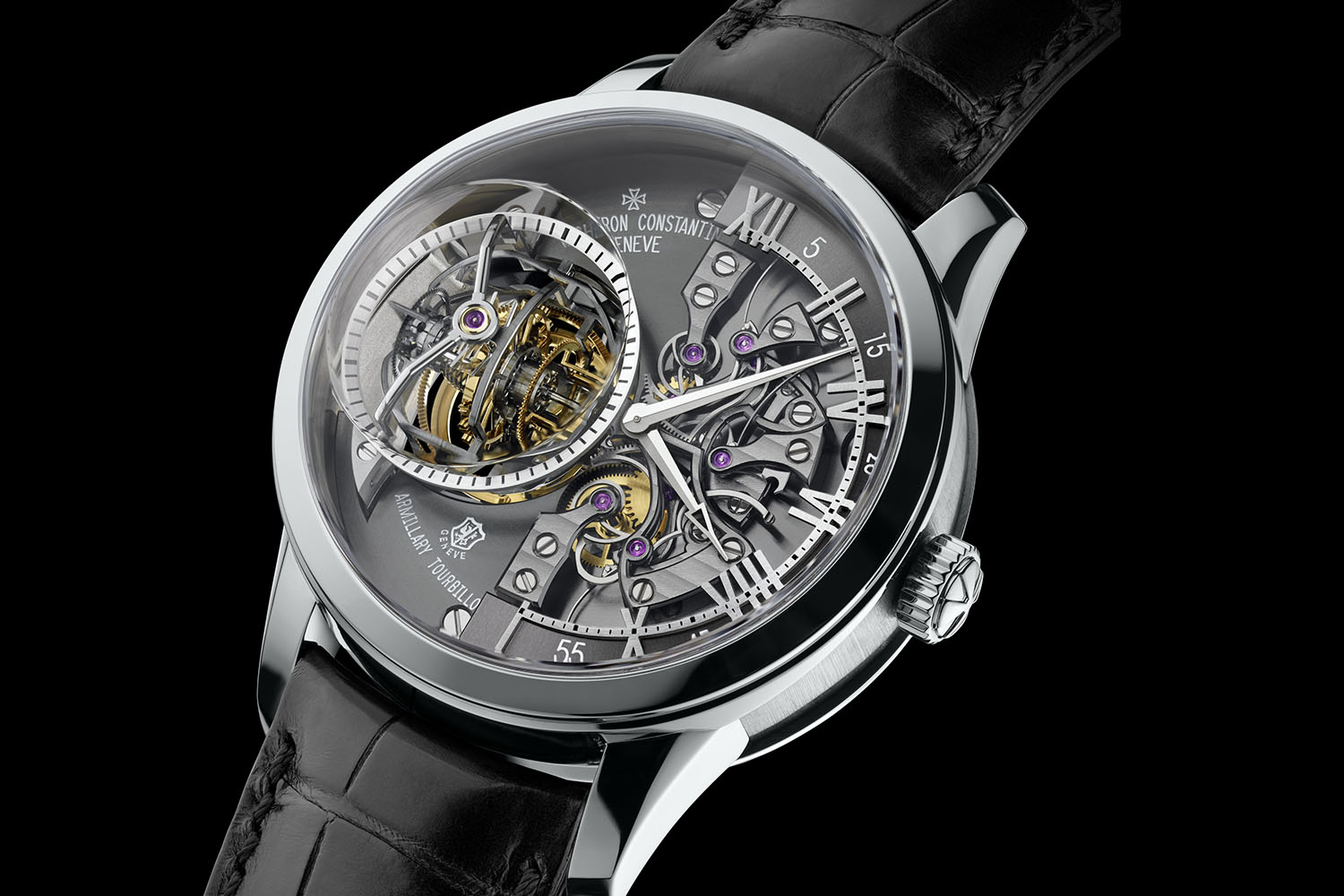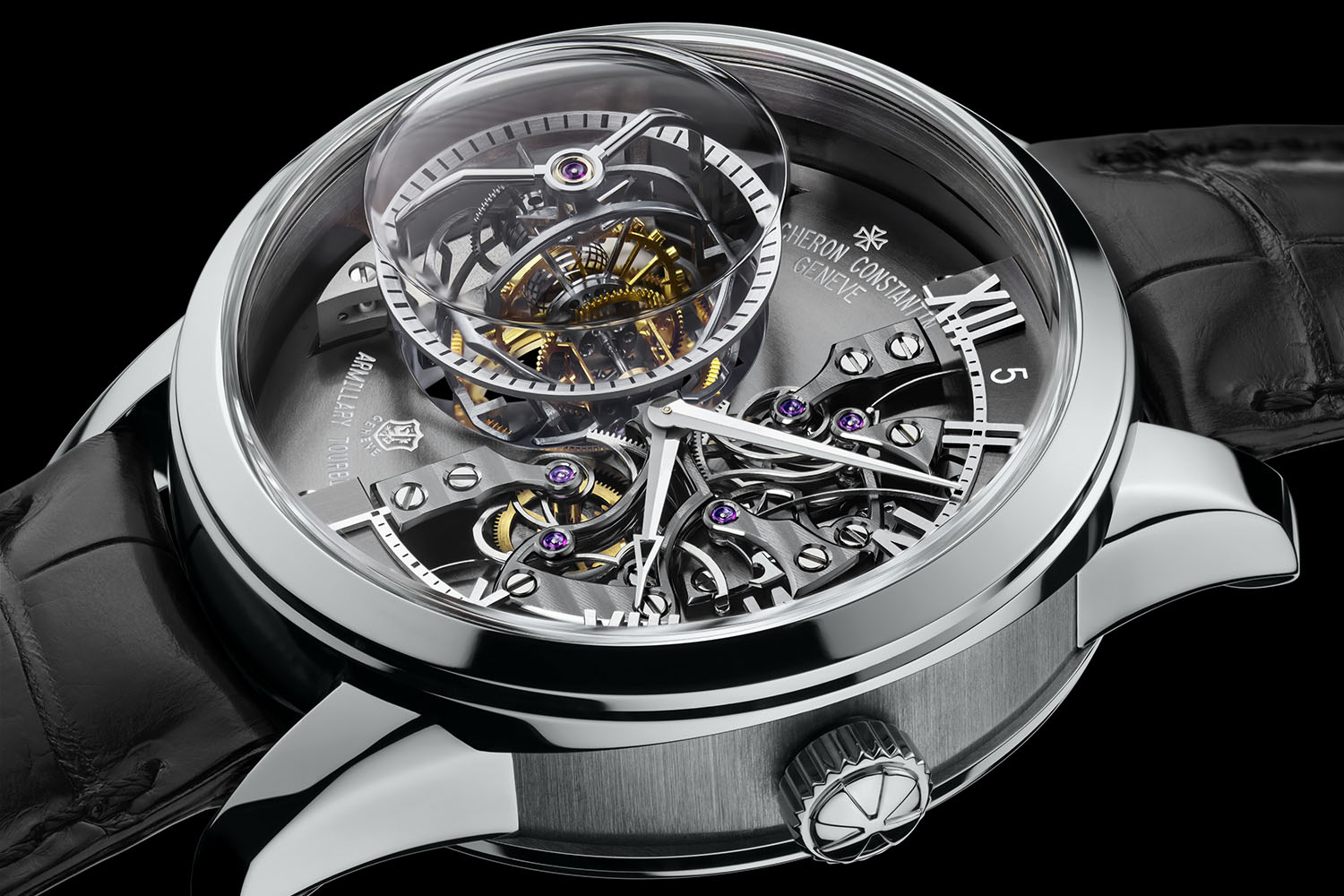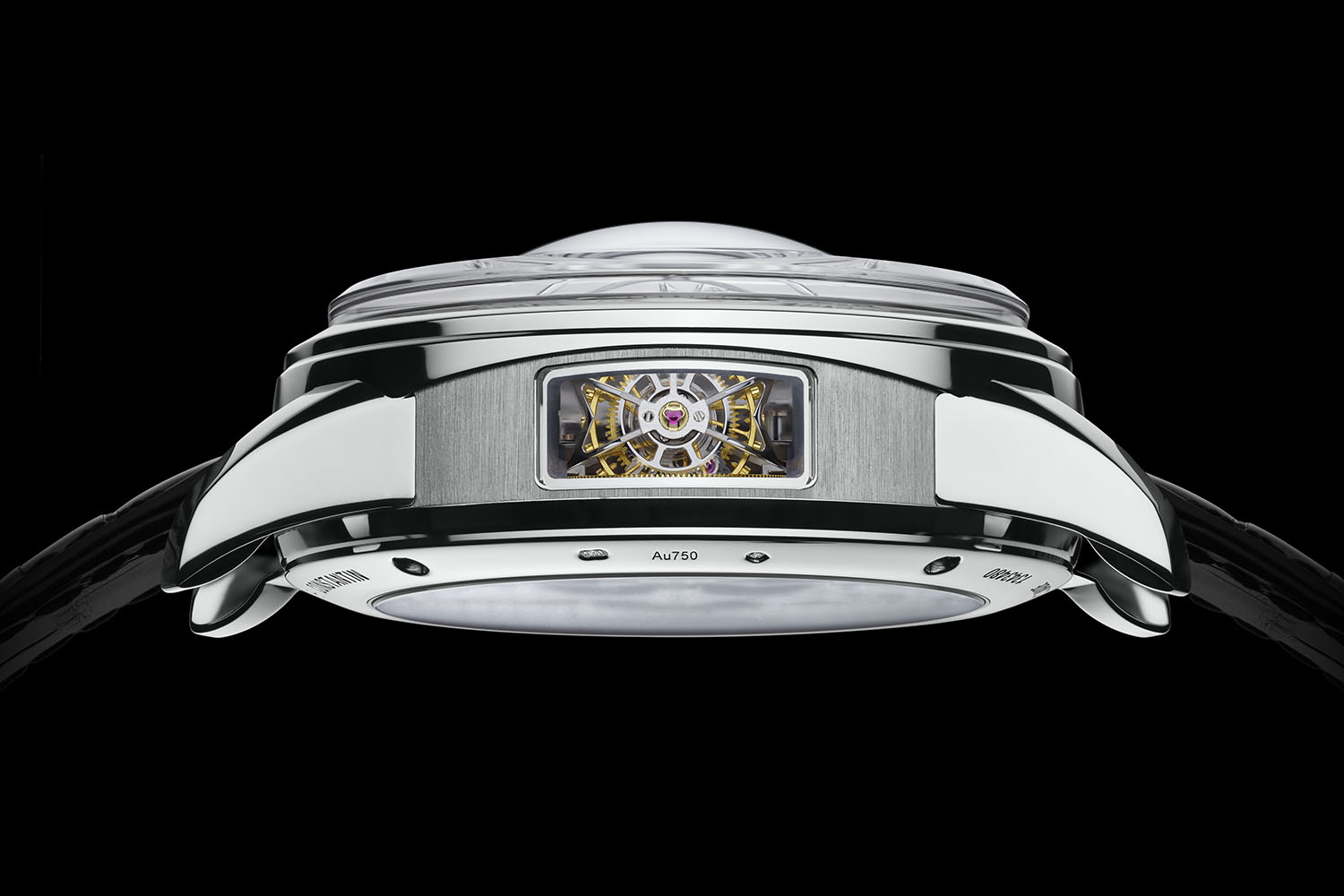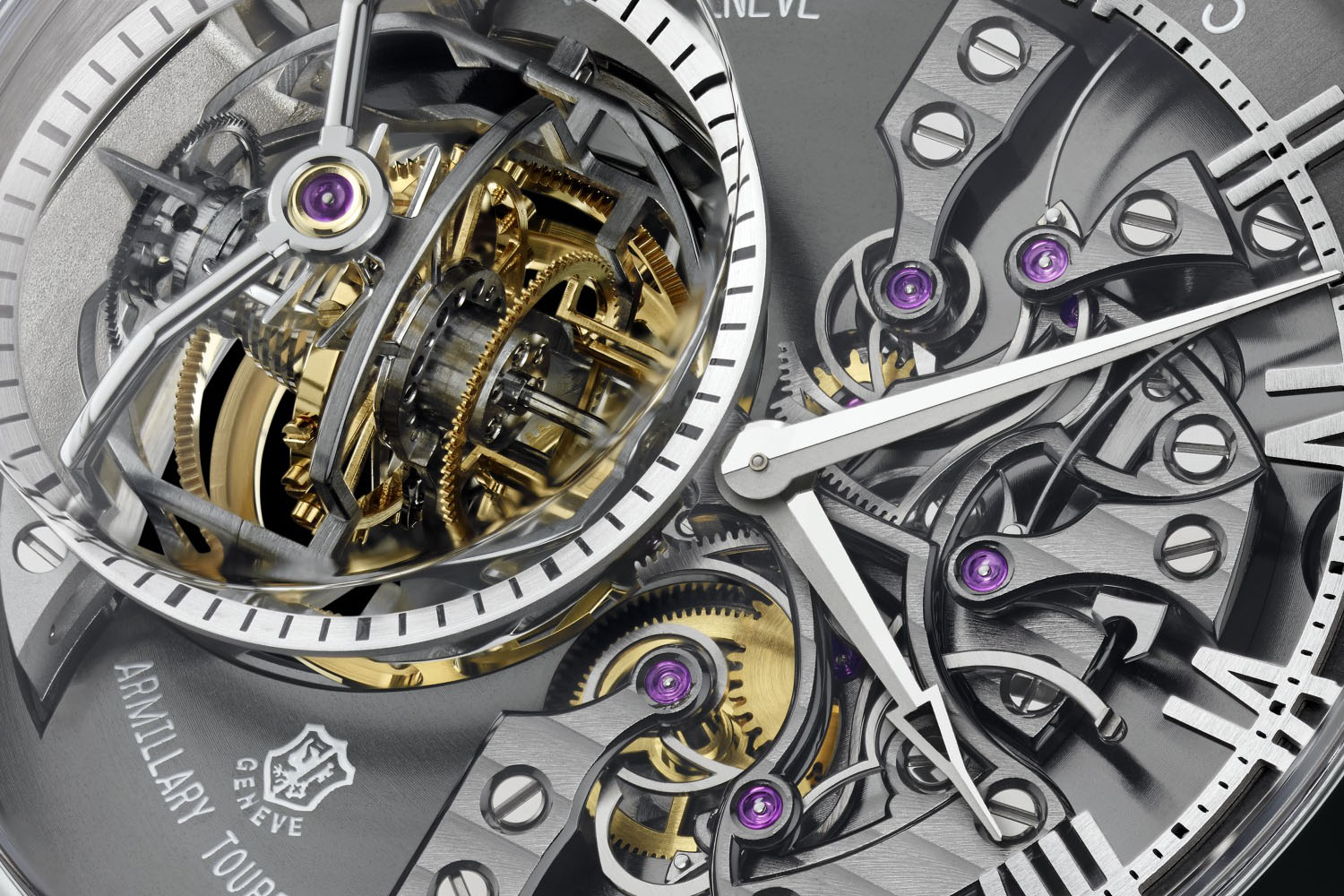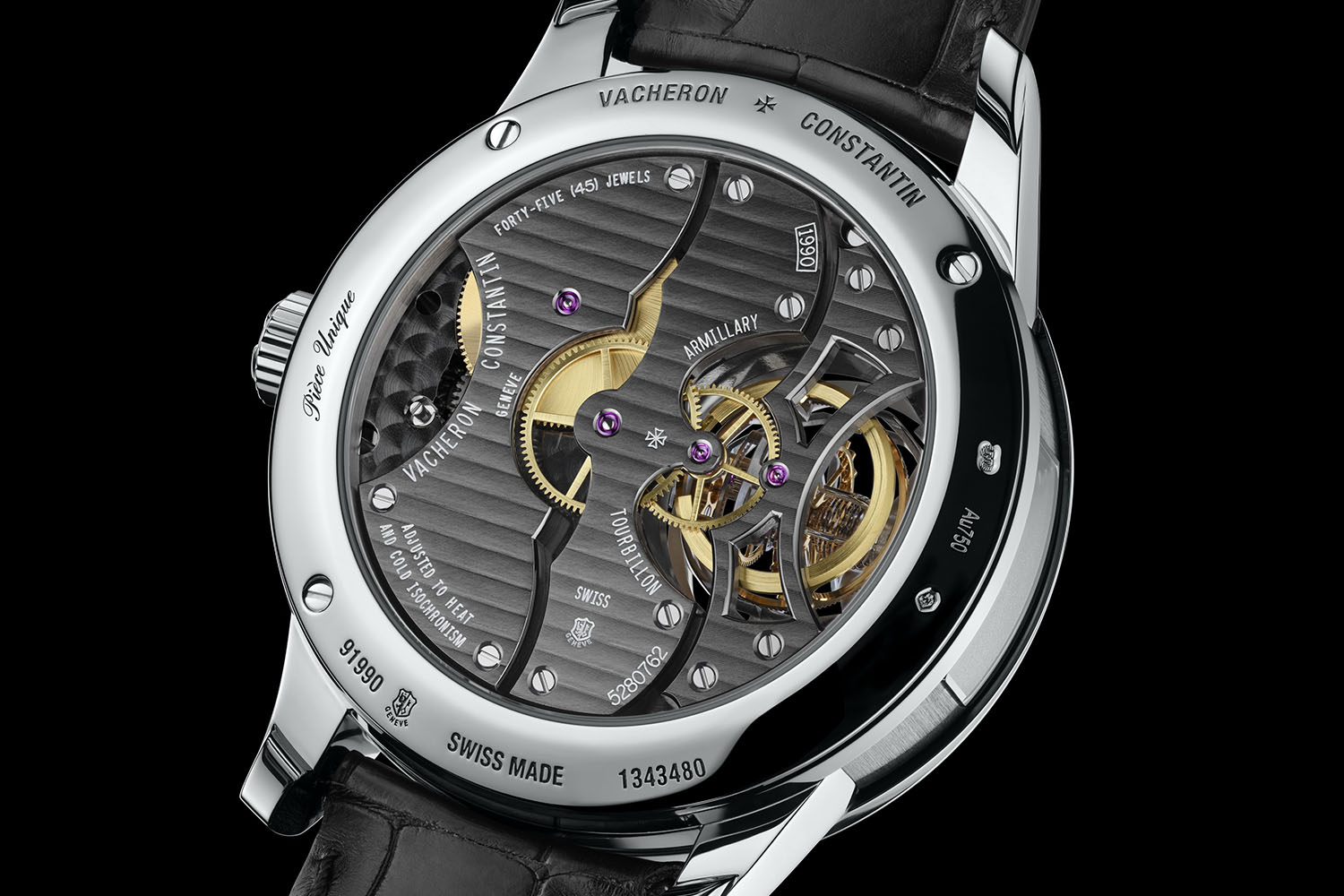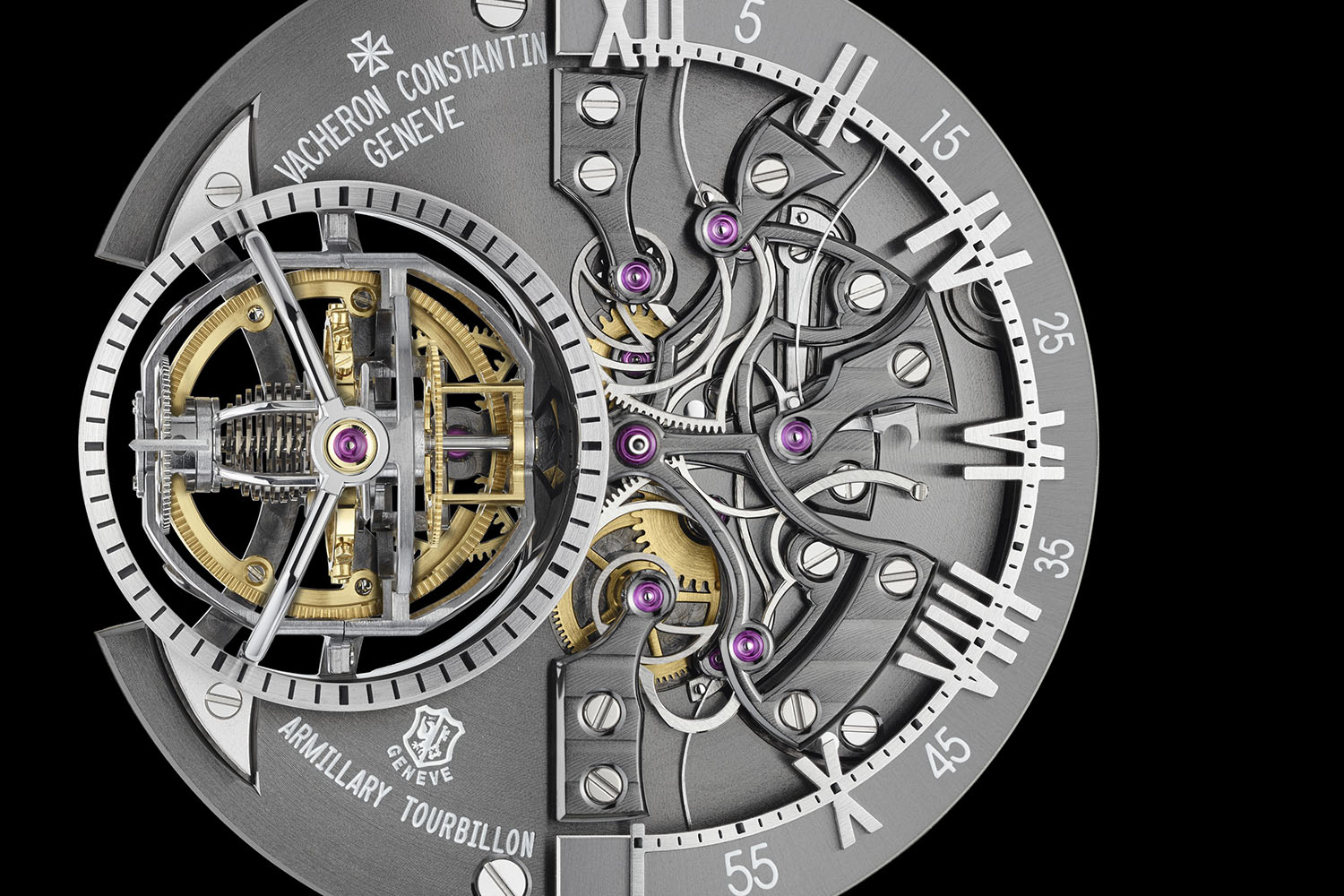Piece Unique – Vacheron Constantin Maitre Cabinotier Retrograde Armillary Tourbillon, using complications from the ref. 57260
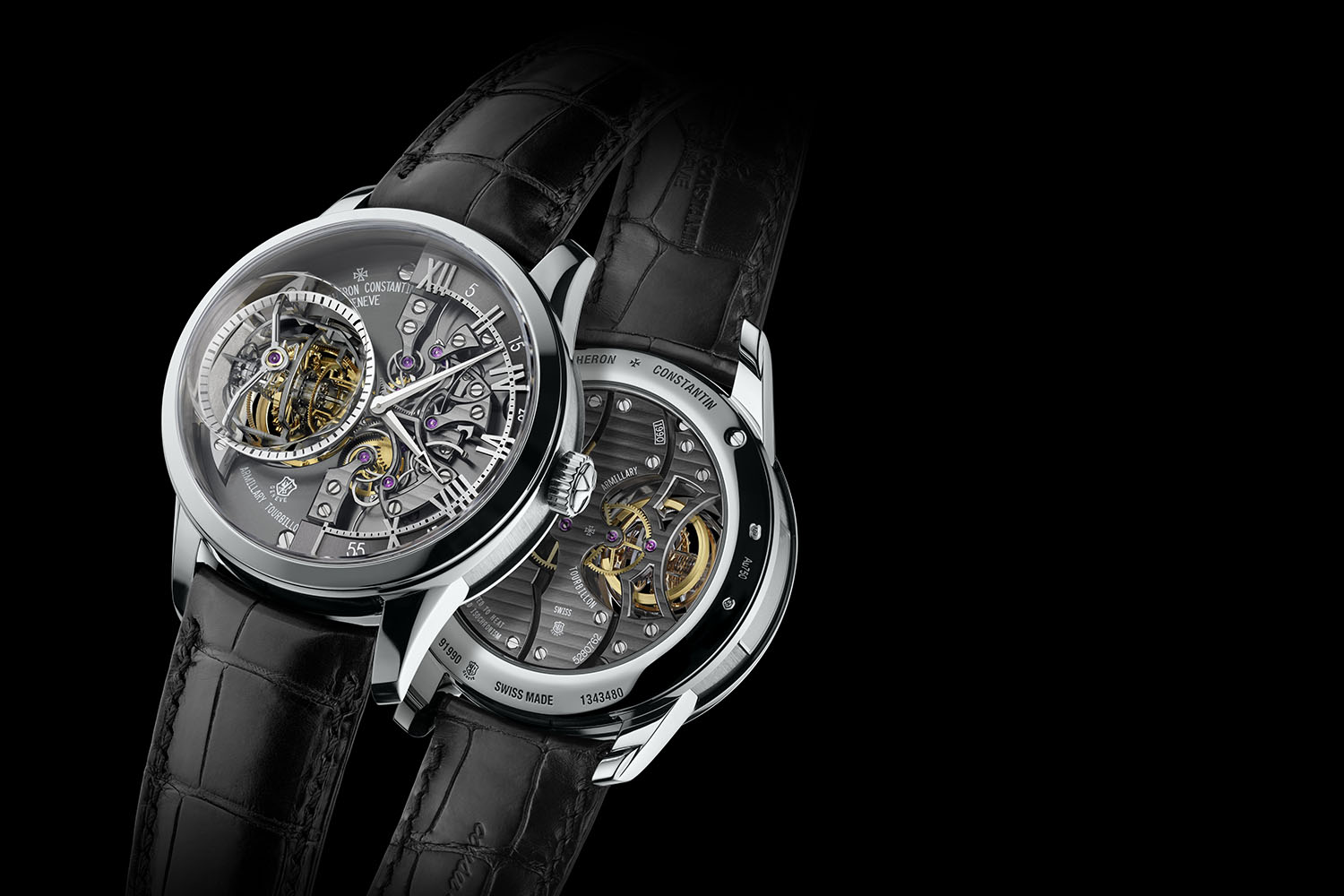
In September 2015, in order to celebrate its 260th anniversary, the old and respectful Maison Vacheron Constantin unveiled what was the most complicated watch ever created with 57 complications, the Super-Complication, known under the ref. 57260. A question that came to our minds at that time concerned the deployment of some of the features used in this stunning pocket watch into more reasonable watches. This is now the case, with a simpler watch bearing 2 of the mechanisms used in the 57260. Well, we say simpler but clearly, this new Vacheron Constantin Maitre Cabinotier Retrograde Armillary Tourbillon is far, very far from being a common wristwatch, as coming with a twin instantaneous retrograde system and a double axis tourbillon…
The Vacheron Constantin Maitre Cabinotier Retrograde Armillary Tourbillon is based on the researches made by the team responsible for the ref. 57260, the world’s most complicated watch with 57 complications. Furthermore, not only it uses some of the mechanisms developed for this astonishing piece but it was produced by the three master watchmakers who created Ref. 57260, and they incorporated two of the complicated features of the superwatch: the armillary tourbillon and the double retrograde indication. You might think “only 2 complications” when the other had 57… Yes but clearly, these two aren’t the worst ones and can already be called very Haute Horlogerie. And keep in mind that 4 patents were used to create the Vacheron Constantin Maitre Cabinotier Retrograde Armillary Tourbillon – which will remain unfortunately a piece unique.
The first – and most visible – feature used in the Vacheron Constantin Maitre Cabinotier Retrograde Armillary Tourbillon is the multiple-axis tourbillon (which was developed for the 57260). Such multiple axis tourbillons remain an exception and are clearly extremely complicated to assemble. It’s called an armillary tourbillon because it is based on an armillary sphere like the one incorporated in an astronomic clock made by the French clockmaker, Antide Janvier, in the 18th century. However, unlike the triple-axis tourbillon of the 57260, in this easier iteration, the regulating organ rotates only on 2 axis. This tourbillon is made up of two carriages, one inside the other. As they rotate, they form a Maltese Cross every 15 seconds. The tourbillon has a Vacheron escapement and sprung balance. The escape wheel is made of silicon with a diamond-like coating, while the diamond pallet stones have a very low coefficient of friction.
The tourbillon carriage, made of lightweight aluminium alloy, incorporates Vacheron Constantin’s Maltese Cross emblem, which forms up every 15 seconds as the tourbillon rotates. This regulating organ also features a cylindrical balance-spring, enhancing precision – this shape ensures the concentric development of the spring and consequently the isochronism of the balance wheel. This tourbillon operates as a sphere perpetually rotating on two axis under a sapphire crystal dome at 9 o’clock. It is also visible from the side of the watch – through a sapphire aperture – and of course from the caseback. Another patent concerns the collet, fixing the spring to the balance staff, which is here made of lightweight titanium, again to improve the isochronism of the balance.
The second main feature of the Vacheron Constantin Maitre Cabinotier Retrograde Armillary Tourbillon concerns the display of time, which isn’t relying on traditionally rotating hands. Instead, it uses a double retrograde system, meaning retrograde hours and minutes indications with instant flyback. This feature also comes from the superwatch 57260, where it was used for the rattrapante chronograph. Here, even if the mechanism behind the scenes is similar, it is used for the indication of time. Thus, it also reminds us of another watch from Vacheron Constantin, the Mercator (see some examples here), which displays the time with two retrograde hands located on the top of the dial (but in this one, the hands are not using the same track).
Both hands travel on track starting at 12 and ending at 6, serving for both the 12 hours and the 60 minutes. These hands are “flyback retrograde” meaning that once their journey achieved, they will instantaneously jump back to their original position. To ensure a precise indication and considering the speed of the hands, lightweight materials such as titanium are required. Furthermore, the retrograde action of both hands is perfectly synchronized at noon and at midnight.
This double retrograde mechanism is entirely visible through the dial. It relies on snailed wheels and rakes. Several bridges and gears are also visible and, as you can see on the close up photo below, all are finished with extreme care: continuous Geneva stripes, internal and sharp angles, highly polished beveled angles, polished and beveled screws… This Calibre 1990 is stamped the Hallmark of Geneva – and probably goes beyond its requirements.
The movement of the Vacheron Constantin Maitre Cabinotier Retrograde Armillary Tourbillon, of course entirely developed and manufactured by Vacheron, presents a superb and modern finish, with bridges and main plate electro-plated with an NAC treatment in a dark anthracite colour, creating a mirror-polished effect. On the dial side the movement displays its modern architecture with sharply cut bridges tempered by a sunburst satin finish and Geneva stripes. The back of the Calibre 1990, even if showing a dark treatment, remains more traditional. The cut of the bridges is in the vein of the Vacheron production and the bridges are finished with thin Geneva stripes. Angles are executed with large polished chamfers and many internal angles (chamfering all the edges took more than 130 hours). This movement comprises 299 parts and boats approximately 65 hours of power reserve.
This contemporary design can also be found in the case, manufactured in 18k white gold, and measuring 45.7mm in diameter. Considering the presence of a multiple axis tourbillon, the Vacheron Constantin Maitre Cabinotier Retrograde Armillary Tourbillon is a thick watch (over 20mm) and for once, we won’t see it as a fault. Such a regulating organ requires some space, period! The case alternates between polished and vertically brushed surfaces and its shape remains rather unusual for the Old Maison, without being unpleasant.
This Vacheron Constantin Maitre Cabinotier Retrograde Armillary Tourbillon will remain a piece unique (don’t ask the price…) but it opens the door to more watches of this type, all relying on developments introduced with the super-complication ref. 57260. It seems that we’re going to be impressed by Vacheron again in the coming years, for our pleasure of course. More details on Vacheron-Constantin.com.

